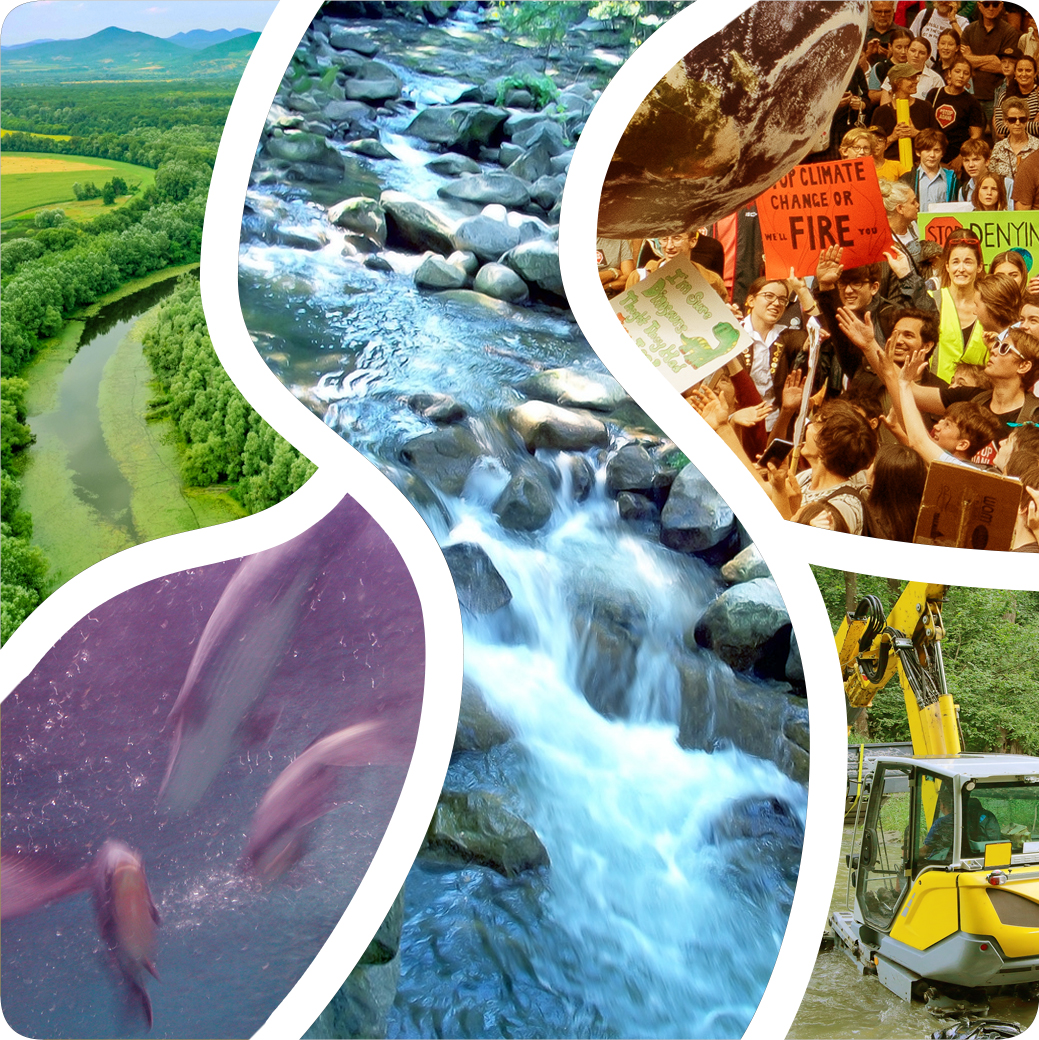Elena Kmetova-Biro
LIFE WILDisland Project Coordinator - Donau-Auen National Park
Restoration Engineers / Consultants / Practitioners

My Projects
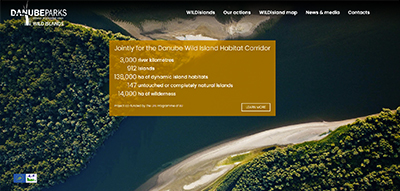 LIFE Danube WILDisland Habitat Corridor
LIFE Danube WILDisland Habitat Corridor
- Key project facts
Project unites 15 partners from 8 countries; gathering entities from nature conservation, hydropower, navigation and forestry for joint work to strengthen ecological connectivity and preserve the natural wilderness in the heart of Europe; restore natural processes and promote river dynamics and intact sediment regime.
The project represents an amazing example of cross-sector trans-border cooperation to restore and conserve a total of 34 islands all the way from Germany to Romania.
- What impact did these projects have on biodiversity, if any?
LIFE WILDisland is a unique opportunity for concerted action by a transnational consortium for Danube-wide improvement and restoration of alluvial forests with Alnus glutinosa and Fraxinus excelsior (Alno-Padion, Alnion incanae, Salicion albae). Across all Danube countries, in total, 34 islands will be restored, with direct positive impact on 91E0* habitats on 1,267 ha.
Additionally, it aims to preserve 147 WILDislands to strengthen ecological connectivity, promote 14,000 ha of wilderness, re-dynamize 48 km of waterbodies and restore 1,444 ha of floodplains.
- What work challenges did you face and what approach did you take to solve them?
Greatest challenges are posed by the long and complicated technical planning and permitting process for our revitalization activities (side-arm restoration, embankment removal, groyne adaptation and sediment dredging). This issue is handled through in-build buffer periods, yet some of the processes are completely external and cannot be impacted by the team.
Another serious issue is inflation, resulting in great increase of staff costs and construction prices, since the project was planned in 2019-2020 and submitted in 2020. The issue is partially handled by budget relocations and attracting supplementary funding.
- What lessons learned are transferable to other places/projects?
The entire concept of using WILDislands to promote natural hydrological regimes, intact riparian ecosystem functions and services and investing in their restoration and conservation is transferrable to all other large European rivers – Rhine, Sava, Drava and beyond.
- What is your biggest barrier and what are you trying to do about it?
Securing the necessary technical permits on time, achieved through active and open communication with planners and authorities and high-quality transparent planning process.
My Focus and Approach
- Lessons Learnt - Some recommendations for others?
- What’s most important:
Cross-border and cross-sector cooperation, transparent communication, flexibility and preparedness for reasonable compromises.
- Do this, not that:
Work together, listen, plan carefully and have a contingency plan.
- Always start by:
Agree on common goals and discuss means to achieve them.
- What to do when things get difficult…:
Negotiate an acceptable alternative solution.
- 5 simple steps to:
- Set and clearly explain your goals.
- Work with planners to optimize results.
- Know your key stakeholders and decision-makers.
- Inform and improve awareness to win the public.
- Be flexible and ready to adapt.
- The biggest barrier and what I am trying to do about it:
Ensuring financial resources and administrative/political support – work with stakeholders and explain your goals and expected results.
- What’s most important:
My Journey
- My journey:
My professional career started as a volunteer at the Bulgarian Green Balkans NGO moving from field work to planning and management of some of the most successful species restoration projects in Bulgaria, which lead to the restoration of the populations of Griffon Vulture, Cinereous Vulture, Lesser Kestrel and Saker Falcon. My family moved to Austria and as I was determined I will stay in the field of nature conservation, I felt I could use my administrative and managerial experience and support the wonderful team of DANUBEPARKS and the Donau-Auen National Park. I have always been focused on achieving tangible results on site and supporting the field teams, ensuring political and financial support and I felt in love with the international family of the WILDisland project and the magic of the free-floating Danube and its riparian habitats. Now, again, it is much more of a job – it is a quest for restoration and nature conservation.
- My Education:
- MSc Environmental Sciences, Policy and Management, Central European University, Budapest, Hungary in cooperation with University of Manchester, UK.
- BSc Ecology and Nature Conservation, “Pasii Hilendarski” University of Plovdiv, Bulgaria.
- The Big Change:
Our current project aims at restoring a total of 34 islands along the Danube, promoting 14,000 ha of wilderness at the heart of Europe, re-dynamizing 48 km of waterbodies and restoring 1,444 ha of floodplains.
It has resulted in the successful establishment of a Danube WILDislands Ramsar Regional Initiative as a tool for gaining political recognition, mobilizing additional funding, improving awareness and continuing our efforts past the project end.
It has placed nature park administrations, waterway companies, forestry enterprises and hydropower companies on one table to discuss and develop joint solutions for riparian conservation.
- Favourite part of the work I do:
The visible change and restoration of the riparian sections we are dealing with, the return of the nesting birds and the natural vegetation.
Interview
Key Topics:
Key Topics
These relate to specific topics (e.g. technical solutions; restoration activities etc.) addressed within the showcase materials.
- WILDisland restoration and conservation
- river redynamization
- non-intervention management
- cross-sector and cross-border cooperation
Prone2Success Factors Demonstrated:
Prone2Success Factors Demonstrated
These are the Prone2Success checklist factors which are highlighted within this showcase. More information on the Prone2Success checklist can be found here.
- Measurable goals to improve ecological status
- Measurable goals to improve ecosystem services
- Supports WFD, NRL and other restoration policy goals
- Communicate/engage with stakeholders from the outset
- Obtain sufficient finance for all project stages
- Restoration works (design) are self-sustaining
- Local planning processes are transparent / clearly understood
- Include long term monitoring
- Ensure stakeholder understanding / education of restoration goals & benefits
- Demonstrate specific ecological improvements/legal compliance / communicating results during and after the project
NRL Restoration Categories:
NRL Restoration Categories
These are the restoration categories (listed under Annex VII of the European Nature Restoration Law (NRL) which are relevant to this showcase.
- [2] Improve hydrological conditions
- [5] Re-establish river meandering
- [6] Remove obsolete barriers
- [7] Re-naturalise river beds
- [8] Restore natural sedimentation
- [9] Establish riparian buffers
- [12] Assist migration of provenances and species
- [22] Improve connectivity across habitats
- [24] Remove / control invasive species
- [26] Restore fish spawning / nursery areas
Was this information useful?
No
Thank you for submitting feedback.
Click here to share your thoughts
Resources
Articles
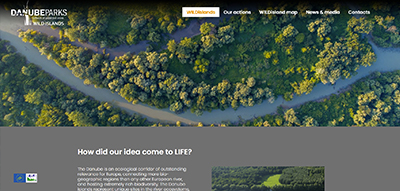 How did our idea come to LIFE?
How did our idea come to LIFE?
Videos
Erebe-szigeti átvágás
WILDisland Erebe island restoration
LIFE WILDisland groyne opening at Erebe island
Similar project, also aiming at island revitalization:
Intro to Upper Danube Demo Site (1) - Donau-Auen National Park, Austria. 2024
Intro to Middle Danube Demo Site (2) - Sződliget, Hungary. 2024
Presentation
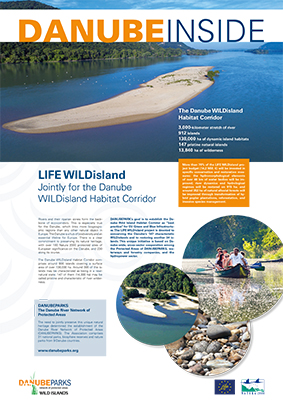 LIFE WILDisland
LIFE WILDisland
Jointly for the Danube
WILDisland Habitat Corridor
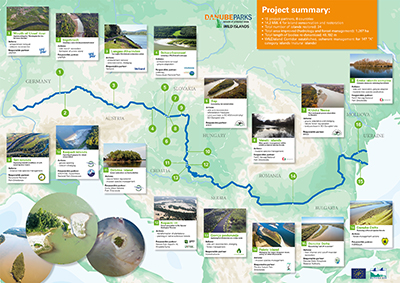 DANUBE PARKS - WILDislands Map
DANUBE PARKS - WILDislands Map
Peer reviewed papers
Acknowledgements & Links
This material was provided by: Elena Kmetova-Biro.
LIFE funding instrument of the EC.

